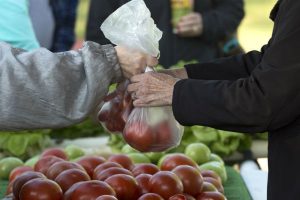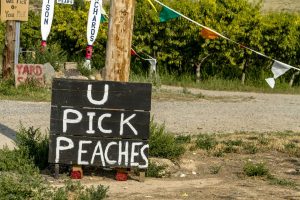DIVERSE DECISIONS
Anyone who runs their own business knows that it’s important to find sustainable income streams. One way farmers can look to grow their business is through farm diversification. By earning revenue in multiple ways, independent farmers can try out new ideas without major risk. That’s why our small grants to independent farmers and CSAs can make a big impact to their livelihood and sustainability.

The different options available to farmers looking to diversify their land are many. The USDA (United States Department of Agriculture) published a list of farm diversification options into different categories from crops to livestock to recreational or educational services. As a way to keep American farming viable, the USDA provides ideas on how to build upon your farm’s and personal strengths. For example, if you have a varied landscape with a good view of the surrounding area… consider building a nature walk and cafe. Or, how about an Ostrich farm where visitors can see hatchlings and feed them?
SELLING DIRECT
With the farm-to-fork movement, we see more farmers successfully selling directly to their consumers. With the popularity of farmers markets and seasonal farm stands, more people appreciate (and hopefully seek out) produce that’s locally grown and organic. Rather than selling to a produce broker, farmers now have greater control of how, to whom, and where they sell their produce.
Another community-focused idea is a Community Supported Agriculture (CSA). A CSA helps support local farms by enabling them to distribute their produce more directly to the local community. There are many advantages for consumers:
- Eat fresh food that’s locally grown
- Get exposed to new types of fruits and veggies
- Build a relationship with their local farmer
Through a CSA, farmers:
- Receive income throughout the year helping with cash flow
- Get to know the people who enjoy their produce and receive feedback
- Focus their marketing efforts during off-season rather than during the busy growing/tending season
Selling direct also helps to make people make the connection to their food. As a result, consumers feel more involved in their local farms and fosters a strong community bond. Many fresh-minded restauranteurs have used CSAs for years, featuring local and organic produce as they prepare dishes according to each season.
THINKING OUTSIDE OF THE PRODUCE BOX
Some of the more interesting farm diversification ideas we have seen, outside of Yak farming, revolve around community and visitor engagement. Pick-your-own crops can be a brilliant idea for farms that sell produce locally. Such an operation also provides an interesting and educational experience to visitors. Many enterprising farmers sell other local produce or products (such as beeswax candles). Another related idea is agri-tourism, which can mean a range of things from offering farm tours, to a small petting zoo, or even a small bed and breakfast style hotel. Some farms have created campsites on unfarmed land. Whatever your idea, you’ll need to make sure you have the right permits and adhere to applicable laws 😉
A wonderful example is Harley Farms in Pescadero; they are a working dairy with 200 alpine goats. They have diversified their farm by selling cheese, bath & body products (including paint) as well as host farm tours, private dinners, and special events.
FARM DIVERSIFICATION WORKS WHEN NOT SPREAD TOO THINLY
Ultimately it is important to stick to something you know and something that fits within your business. There are only so many hours in the day. Some ideas seem great but quickly become unworkable if they require too much time or distract you from your core strengths. We’ve found the best diversification ideas complements the farm and adds value to it
What’s the most unusual farm diversification idea you’ve seen?




